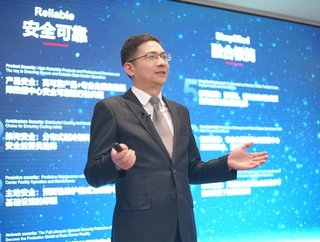Huawei Highlights Top 10 Data Centre Trends for 2024

While the world gets to grips with the potential of Generative AI to transform our lives, the data centre industry on which that technology depends is facing up to an exciting future.
McKinsey projects that data centre demand will reach 35GW by 2030, more than doubling the 17GW in 2022.
Recently, Huawei held a conference and published a white paper outlining the key trends facing the data centre industry in 2024
Yao Quan, President of Huawei Data Centre Facility Domain, highlighted three main attributes for the data centres of the future – reliable, simplified, and sustainable.
Here are the Top 10 Trends of Data Centre Facility for 2024 as outlined in the Huawei white paper.
Trend 1: High-Reliability Products and Professional Services Are the Key to Ensuring Secure and Reliable Data Centre Operation
Data centres store, process, and transmit massive volumes of data, ensuring the stable operation of various industries. One of the shortcomings of data centres has been the lack of attention toward safety and reliability. To achieve safe and reliable operations, the concept of ‘full-chain safety’ must be implemented throughout product design and manufacturing.
Trend 2: Distributed Cooling Architecture Will Become a Better Choice for Ensuring Cooling Safety
Traditional large-scale data centres mainly use centralised cooling architecture. In a chilled water system, dozens of devices co-exist in a chiller plant. As these devices cannot run independently, a single failure impacts the safety of the entire plant.
Distributed cooling architecture is more flexible and ensures the reliable operation of data centres.
Trend 3: Predictive Maintenance Will Become a Basic Feature of Data Centre Infrastructure
Data centre maintenance is usually performed after an event. However, intelligent computing will greatly reduce response time to faults. Predictive maintenance will become a basic feature for data centre infrastructure. Thanks to the rapid development of AI technologies, the scope of predictive maintenance will be further expanded.
Trend 4: The Lifecycle Network Security Protection System Will Become a Shield of Data Centre Facility
As digital technologies advance, network attacks are occurring more frequently. Moving forwards, the security of data centre infrastructure can only be ensured based on both hardware security and software security. Software security must be built upon a lifecycle network security protection system from three dimensions: supply security, in-depth defense, and O&M/operation security.
Trend 5: Prefabricated and Modular Solution Will Become an Optimal Choice for High-Quality and Fast Delivery
The rapid development of global cloud services is placing significant demand on the construction of more data centres. However, traditional data centre construction is slow, meaning supply is not keeping pace with demand.
Prefabricated and modular solutions with a shorter construction period and higher quality will emerge as an optimal choice.
Trend 6: Professional Management Platform Makes Data Centre O&M More Secure and Efficient
From 1,000-rack buildings to 10,000-rack campuses, data centres are scaling up. This means the complexity of overall O&M increases dramatically. A professional management platform can significantly improve the O&M efficiency and accuracy of data centres. As a result, data centers can operate more safely and reliably.
Trend 7: The Convergence of Air and Liquid Cooling Becomes the Preferred Architecture in Uncertain Service Requirements Scenarios
The industry is transitioning from general-purpose computing to intelligent computing. The power density of a single rack for general-purpose servers does not usually exceed 15 kW, and air-cooling is sufficient. However, the power density of a single rack in an intelligent computing centre exceeds 30 kW. In this scenario, liquid cooling is required. The convergence of air and liquid cooling will become a preferred architecture, where the proportion of air cooling and liquid cooling can be adjusted to maximise customers' ROI.
Trend 8: Indirect Evaporative Cooling Is Still the Best Refrigeration Scheme Now and in the Future
Air cooling is still the undisputed champion. The indirect evaporative cooling system remains the most cost-effective cooling solution. The distributed cooling architecture of an indirect evaporative cooling system effectively prevents single-point failures, leading to higher reliability.
In response to intelligent computing power demands, the indirect evaporative cooling system future-proofs the architecture, allowing it to further adapt to liquid-cooled computing scenarios.
Trend 9: To Further Reduce PUE, the Optimal Solution is to Shift the Focus on Efficient Components to System Engineering Optimisation
Carbon neutrality is a global mission. Traditional data centres focus on improving efficiency of equipment. However, due to physical limitations, that improvement is about to hit a bottleneck. Therefore, to reduce the PUE of data centres, the focus should be shifted to system engineering optimisation.
Trend 10: AI Optimisation Will Become the Optimal Choice for Intelligent Optimisation of Energy Efficiency for Existing Data Centres
There are still a large number of data centers that require better energy-saving performance, and these need urgent modernisation.
AI energy efficiency optimisation solutions optimise the energy efficiency of existing data centres with preset algorithms and big data models.
Data centres need to evolve
As the digital era enters an exciting new phase, driven by cloud and AI especially, data centres need to evolve.
Looking beyond 2024, AI and other innovations, from Internet of Things devices to autonomous vehicles, require modern data centres to use an incredible amount of energy. The existing grid will struggle to meet these demands, especially in rural areas.
Not only is grid modernisation essential, but also off-grid solutions powered by renewable energy.
We can expect to see utilities companies, independent energy producers, hyperscalers, and renewable innovators working together on improved, resilient, future-ready infrastructure.
Automation is also a growing, urgent trend, with data centre operators under pressure to improve efficiency. While many processes in data centres are already automated, we can expect this to increase in he pursuit of extra operating efficiencies.
In summary, as Huawei highlights, there is a need for reliable, simplified, and sustainable data centres to enable the next digital revolution. Data centres provide the essential processing power required to deliver the promise of the technology of the future, today.
Read the Huawei white paper here.






